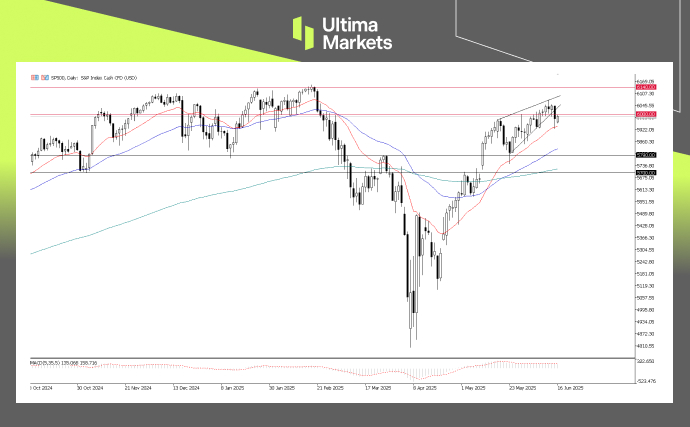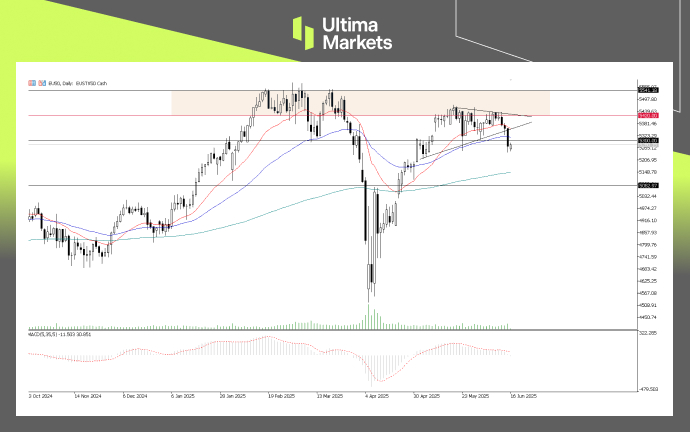
Ultima Markets App
Trade Anytime, Anywhere
Important Information
This website is managed by Ultima Markets’ international entities, and it’s important to emphasise that they are not subject to regulation by the FCA in the UK. Therefore, you must understand that you will not have the FCA’s protection when investing through this website – for example:
- You will not be guaranteed Negative Balance Protection
- You will not be protected by FCA’s leverage restrictions
- You will not have the right to settle disputes via the Financial Ombudsman Service (FOS)
- You will not be protected by Financial Services Compensation Scheme (FSCS)
- Any monies deposited will not be afforded the protection required under the FCA Client Assets Sourcebook. The level of protection for your funds will be determined by the regulations of the relevant local regulator.
Note: Ultima Markets is currently developing a dedicated website for UK clients and expects to onboard UK clients under FCA regulations in 2026.
If you would like to proceed and visit this website, you acknowledge and confirm the following:
- 1.The website is owned by Ultima Markets’ international entities and not by Ultima Markets UK Ltd, which is regulated by the FCA.
- 2.Ultima Markets Limited, or any of the Ultima Markets international entities, are neither based in the UK nor licensed by the FCA.
- 3.You are accessing the website at your own initiative and have not been solicited by Ultima Markets Limited in any way.
- 4.Investing through this website does not grant you the protections provided by the FCA.
- 5.Should you choose to invest through this website or with any of the international Ultima Markets entities, you will be subject to the rules and regulations of the relevant international regulatory authorities, not the FCA.
Ultima Markets wants to make it clear that we are duly licensed and authorised to offer the services and financial derivative products listed on our website. Individuals accessing this website and registering a trading account do so entirely of their own volition and without prior solicitation.
By confirming your decision to proceed with entering the website, you hereby affirm that this decision was solely initiated by you, and no solicitation has been made by any Ultima Markets entity.
I confirm my intention to proceed and enter this website Please direct me to the website operated by Ultima Markets , regulated by the FCA in the United KingdomGlobal Markets Climb Amid Geopolitical Tensions
Global equities opened broadly higher on Monday, with Asian stock markets leading gains and futures in Europe and the U.S. also trading in positive territory. This comes despite rising geopolitical risks in the Middle East, where tensions between Israel and Iran escalated further over the weekend.
Market Overview
On Friday, global equity markets slipped while oil prices surged sharply, following Israel’s large-scale strikes on Iran’s nuclear and military facilities. The situation worsened over the weekend, with both sides engaging in retaliatory attacks on Sunday.
These latest exchanges reportedly resulted in civilian casualties and heightened fears of a wider regional conflict, as both militaries issued warnings to civilians on the opposing side to take safety precautions.
Investors are increasingly concerned about potential disruptions in the Strait of Hormuz—a strategic shipping route that handles roughly 20% of the world’s total oil consumption. Any extended military confrontation in the region could significantly disrupt oil flows and further elevate energy prices.
Geopolitical Uncertainty Remains High
U.S. President Donald Trump said on Sunday that he hoped Israel and Iran could reach a ceasefire, but added that “sometimes countries have to fight it out first.” He reaffirmed U.S. support for Israel but declined to comment on whether he had urged Israel to halt its strikes.
The Middle East conflict is expected to be a key topic at this week’s Group of Seven (G7) summit in Canada. German Chancellor Merz expressed hope that G7 leaders could reach a consensus on how to help de-escalate the situation.
However, Iran has firmly stated that it will not engage in ceasefire negotiations while under active attack by Israel—adding further uncertainty to the geopolitical outlook.
Oil prices rallied sharply on Friday, with Brent crude settling at $74.80 per barrel and WTI closing at $73.20. In intraday trading, WTI crude spiked over 14%, hitting its highest level since January, while Brent rose nearly 12% for the week.
Global Equities: Cautious Optimism Amid Rising Risks
Global equity markets faced broad selling pressure last Friday, leading to declines across major indices. However, despite escalating geopolitical tensions over the weekend, Asian markets opened higher on Monday, and futures in Europe and the U.S. also edged up.
Still, investor sentiment remains fragile. With several key central bank decisions on the horizon and ongoing geopolitical uncertainty, market nerves could resurface quickly. Any sudden shift in risk appetite or policy tone may trigger renewed volatility across global markets.
S&P 500: Pressure Builds Near Key 6000 Level
As highlighted earlier, the S&P 500’s bullish momentum has started to wane. A rising wedge pattern had formed near the critical 6000 level—often a bearish reversal signal.

SP500, Day-Chart Analysis | Source: Ultima Market MT5
Last week, the index broke below this pattern, and although Monday’s open saw a brief rebound, failure to reclaim the 6000 level could open the door to further downside, especially if global sentiment deteriorates further.
EuroStoxx50: Bearish Breakdown Signals Caution

EU50, Day-Chart Analysis | Source: Ultima Market MT5
The EU50 index has broken below a key ascending wedge structure, signaling a potential bearish reversal. The breakdown comes after multiple failed attempts to breach the upper resistance zone near 5430–5450, which aligns with the upper bound of the multi-month consolidation range.
Summary
While escalating Middle East tensions may not be the primary drag on equities, broader market caution persists due to upcoming central bank decisions and ongoing uncertainties surrounding U.S. trade and fiscal policies.
For now, investors are likely to remain on the sidelines, with risk appetite fragile. Any negative developments—geopolitical or macroeconomic—could quickly sour sentiment and trigger renewed volatility.
Disclaimer
Comments, news, research, analysis, price, and all information contained in the article only serve as general information for readers and do not suggest any advice. Ultima Markets has taken reasonable measures to provide up-to-date information, but cannot guarantee accuracy, and may modify without notice. Ultima Markets will not be responsible for any loss incurred due to the application of the information provided.
Why Trade Metals & Commodities with Ultima Markets?
Ultima Markets provides the foremost competitive cost and exchange environment for prevalent commodities worldwide.
Start TradingMonitoring the market on the go
Markets are susceptible to changes in supply and demand
Attractive to investors only interested in price speculation
Deep and diverse liquidity with no hidden fees
No dealing desk and no requotes
Fast execution via Equinix NY4 server








